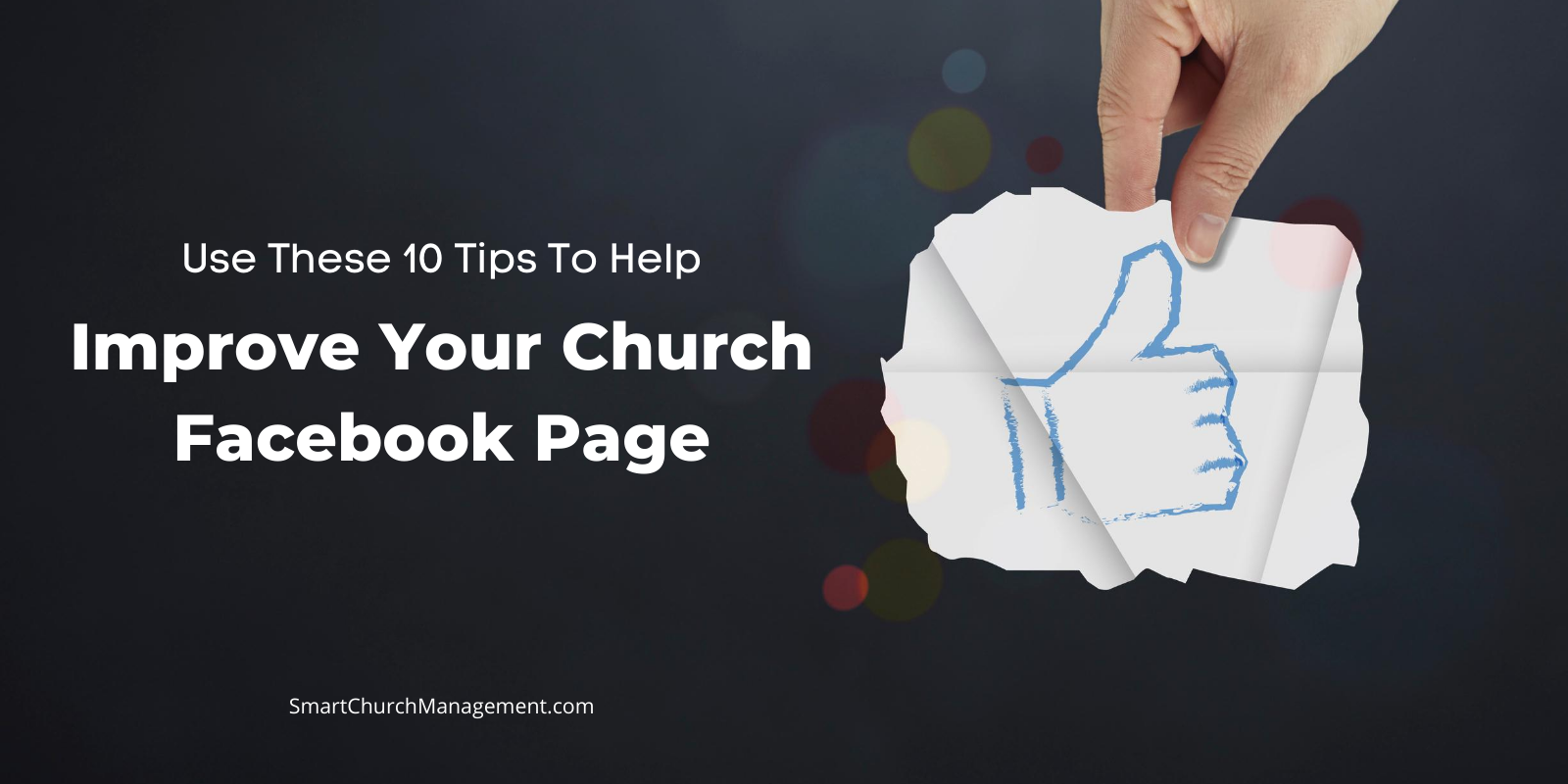Estimated reading time: 5 minutes
This year has undoubtedly been the year to pivot.
Churches have had to change the way they conduct weekly services, sanitize their facilities, and, most importantly, how they stay connected with their members.
Most churches have taken advantage of technology to stream services and use social platforms to connect with members.
Facebook has been an excellent resource for churches, and many use this technology to livestream their services and share through its page.
Make the most of Facebook by utilizing all of its features!
10 Tips To Improve Your Church Facebook Page
1. Complete Your Page
We all get lax, and when we are in a hurry, we tend to skip over details.
Take a look at the Facebook Page Info settings and make sure you complete all of the required information.
For instance, make sure you have your website URL, church office phone number, and church address listed. This is the basic information that a visitor would need to find your church.
Use a good image for the landing page. Pay attention to the required image sizes so the image fits well on the page.
Also, make sure your About information is detailed, compelling, and reflective of your church and culture.
2. Know Your Audience
Learn who your Facebook audience is so you can customize content and communication for that specific demographic.
For instance, is your Facebook audience young, middle-aged, or boomers?
Are they male or female?
This information matters because you will create content differently for different demographics.
3. Post Frequently
Post to your page frequently with content that focuses on engaging with your audience.
Create and schedule posts to go out at least twice a day.
Tip: Prime time to post new content is between 1:00 and 4:00 pm.

While you want to post daily, don’t post so often that your audience becomes blind to your posts.
Be sensitive to information overload and find a balance of useful content that is dripped consistently to your audience.
Learn to use hashtags to create clickable links for your posts.
Tip: Keep posts simple. A 40-character post receives
86% more engagement, so pay attention to your character count!
4. Pin Popular Content
Facebook has a feature that you can highlight and pin a post to the top of your feed.
Use this feature to highlight an upcoming church event, or special announcements or to highlight a valuable volunteer.
Tip: Determine a schedule for pin posts to avoid
oversaturation by leaving them on the news feed for too long.
5. Ask Questions
The whole point of social sharing is engagement.
Use questions as a tool to get your audience talking.
Post thoughtful and reflective questions so that members can share insightful thoughts and inspiration.
Be careful to stay away from controversial topics. The last thing you want is a public debate about a sensitive or private issue.
6. Use Images Or Videos That Are Interesting
We all become numb from the bombardment of images that show in the Facebook feed.
Be creative and find images or videos that are eye-catching or inspirational.
There are many free image sites. Use those to create images for every post.
Use an image editing software to add text and customize the image to add to your message.
7. Learn How To Use Facebook Publishing Tools
Take some time and learn about Facebook Publishing Tools.
These tools allow you to manage and schedule posts.
It also provides a summary of the reach and engagement of published posts.
8. Utilize Facebook Ads
Churches typically don’t do a lot of advertising.
However, Facebook Ads can be used to invite visitors to special services, events, or holiday services.
Use the Facebook Ad Manager to create ads, review effectiveness, and fine-tune an advertising campaign.
For instance, you can create an advertising campaign to invite members of the community to your Easter service. Create multiple ads and test them to see which gets the highest engagement and then use that ad to reach more people.
9. Learn To Use Page Insights
Data can tell a story like nothing else. Spend time to learn about available analytics on the Facebook platform with its Page Insights.
Learn the difference between a post reach, engagement, and page views.
Discover which demographics – age, gender, and location are engaging with your content.
Use that information to fine-tune your approach to reaching those people you serve.
10. Assign Responsibility
Identify someone (paid or volunteer) to be responsible for the church’s Facebook page.
Write a job description and articulate the goals, posting schedule, and expectations for the role.
Ask this person to submit reports that communicate the effectiveness of Facebook efforts.
Partner them with your creative team to ensure that posts reflect the message and culture of your church.
For instance, allow the creative team to help create images and post content that engages your audience.
We would agree that the year 2020 will go down in history as a year of change.
Churches had to modify how church is done.
Fortunately, technology has helped it reach its members but also those who have been forced to shelter in place.
Use this season of change to improve your church’s Facebook page so that you can reach more of your members but also others who are searching for the answers that we know only the Christian message can provide!



